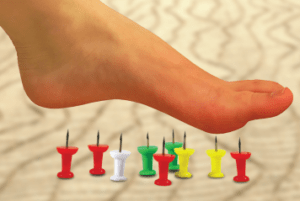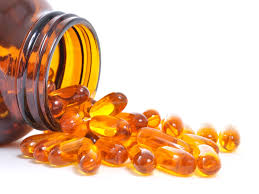“PN (nerve pain) is not only induced by treatment, as studies have found percentages of PN in newly diagnosed MM patients in 13% [2], 11% [11], 54% [13], and 7.2% [14]…”
Nerve pain is both a symptom of MM and a side effect of chemotherapy for the treatment of MM. This post deals with both the symptom of low blood levels of vitamin D3 as a symptom of MM as well as the side effect of treatment caused by low vitamin D3 blood levels.
Low vitamin D3 as a Symptom-
According to the studies linked and excerpted below, low levels of vitamin D3 increases the risk of both peripheral neuropathy and nerve pain before a diagnosis of MM.
Low vitamin D3 as a Side Effect-
If the newly diagnosed MM patient undergoes chemotherapy, often Velcade or revlimid, and the NDMM patient has low blood levels of vitamin D3, he/she is more likely to experience chemotherapy-induced peripheral neuropathy (CIPN).
To clarify what “low levels” of vitamin D3 in the blood are, the best method to determine your blood levels are to get a blood test. Yes, that’s an effort but you’d be surprised how easy it is.

According to research-“A level of 20 nanograms/milliliter to 50 ng/mL is considered adequate for healthy people. A level less than 12 ng/mL indicates vitamin D deficiency.”
I order a testing package from Lab Corp. through my source for supplements (yes vitamin D3)- Life Extension Foundation.
I receive an order form in my email in-box, print it out, take it to a Walgreen’s that performs the LabCorp testing, have my blood drawn, wait a week or two and receive my test results in my email in-box.
I am a member of LEF. I buy a bunch of different nutritional supplements…vitamin D3, curcumin, resveratrol, etc. etc.
If you have any questions or comments, scroll down the page, write a post and I will reply to you ASAP.
Thank you,
David Emerson
- MM Survivor
- MM Cancer Coach
- Director PeopleBeatingCancer
Recommended Reading:
PeopleBeatingCancer Side Effects Program
“Purpose- Peripheral neuropathy (PN) is common in patients with multiple myeloma (MM). We hypothesized that the relationship between hypovitaminosis D and PN described in diabetes mellitus patients may also be present in MM patients…
Results- Of the 120 patients included between January 2017 and August 2018, 84% had an inadequate vitamin D level (median vitamin D level 49.5 nmol/L [IQR 34–65 nmol/L]; mean age: 68 years [SD ± 7.7]; males: 58%). PN was reported by 69% of patients (n = 83); however, of these 83 patients, PN was not documented in the medical records of 52%. An association was found between lower vitamin D levels and higher incidence of PN in the total population (P = 0.035), and in the active MM patients (P = 0.016).
Conclusion- This multi-centre cohort study showed that PN and hypovitaminosis D are common in MM patients, and addressing low vitamin D levels in the treatment of MM patients might be beneficial in reducing the risk of PN. More attention for PN is warranted, as PN is underreported by clinicians. Further research is needed to fully understand the implications of vitamin D in the development of PN in patients with MM…
Despite the advances in treatment, patients frequently experience adverse events such as chemotherapy-induced peripheral neuropathy. Drugs that often induce peripheral neuropathy (PN) are:
- the proteasome inhibitor bortezomib,
- and the immunomodulatory agents such as thalidomide [2,3,4,5,6].
These drugs are frequently given in sequence to MM patients. The cumulative dose is an important predictor for the occurrence of bortezomib-induced PN [7, 8]. Grade 2–3 neuropathy has been reported by 65% of patients using bortezomib when the ‘Indication for Common Toxicity Criteria (CTC) Grading of Peripheral Neuropathy Questionnaire’ (ICPNQ) was used [9], and other studies found percentages up to 70% of patients for these PN-inducing drugs [6, 10,11,12]. Such adverse events may make it necessary to adjust doses, or delay or terminate treatment, negatively influencing time to progression and survival [8, 11]…
PN is not only induced by treatment, as studies have found percentages of PN in newly diagnosed MM patients in 13% [2], 11% [11], 54% [13], and 7.2% [14]…
Getting enough, but not too much, vitamin D is needed to keep your body functioning well. Vitamin D helps with strong bones and may help prevent some cancers. Symptoms of vitamin D deficiency can include muscle weakness, pain, fatigue and depression. To get enough D, look to certain foods, supplements, and carefully planned sunlight…
What are the health effects of vitamin D deficiency?
Getting enough vitamin D may also play a role in helping to keep you healthy by protecting against the following conditions and possibly helping to treat them. These conditions can include:




